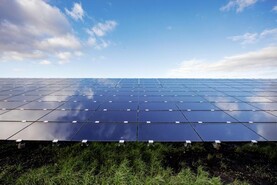Bord na Móna has delivered its highest ever annual operating profit of €106.7m, saying the results reflect the strong performance of the company’s core renewable energy business.
The record profit figure included a once-off gain of €7.3m from the sale of a 50% stake in Electricity Exchange DAC and a profit of €57.1m realised on entering a strategic partnership with SSE Renewables in March of this year.
Bord na Móna said that it successfully completed its “brown to green transition” as it concluded all former peat operations and the use of peat as an energy source. In December 2023 the company ended the use of peat at its Edenderry power station, saying it invested €100m in its decarbonisation and transition to 100% biomass.
The company says its financial performance positions it to become the largest renewable energy provider in the state, with a pipeline to develop a total of 5 gigawatts of renewable energy.
During the financial year Bord na Móna invested €164m in green energy projects, and is also working in partnership with Gas Networks Ireland to connect the Edenderry facility to the gas grid. Once the connection is complete and operational by 2029, Edenderry’s existing flexible diesel power generator will switch to natural gas, giving a 40% reduction in carbon emissions from the plant.
Peatland
The company said it restored almost 4,000 hectares of peatland over the past 12 months. After the end of the company’s financial year it made what it describes as a “considerable investment” in the launch of its first Eco Energy Park, with Amazon web services the first company to join the park. Bord na Móna plans to use 3,000 hectares of its landbank to co-locate industries and renewable energy generation.
Chief executive Tom Donnellan said: “Our current financial positioning will be the enabler of further investment and innovation which will secure both the future of the business, as we develop our 5GW renewable energy pipeline, and support Ireland’s clean energy capability as we chart a path to net zero emissions by 2050.”






 This is a subscriber-only article
This is a subscriber-only article










SHARING OPTIONS: